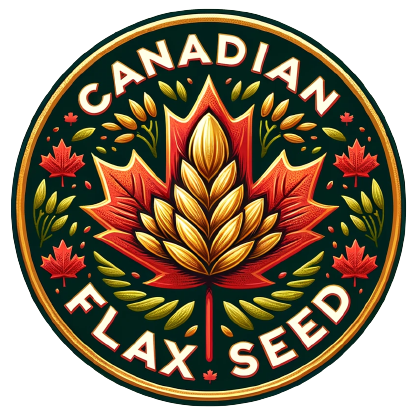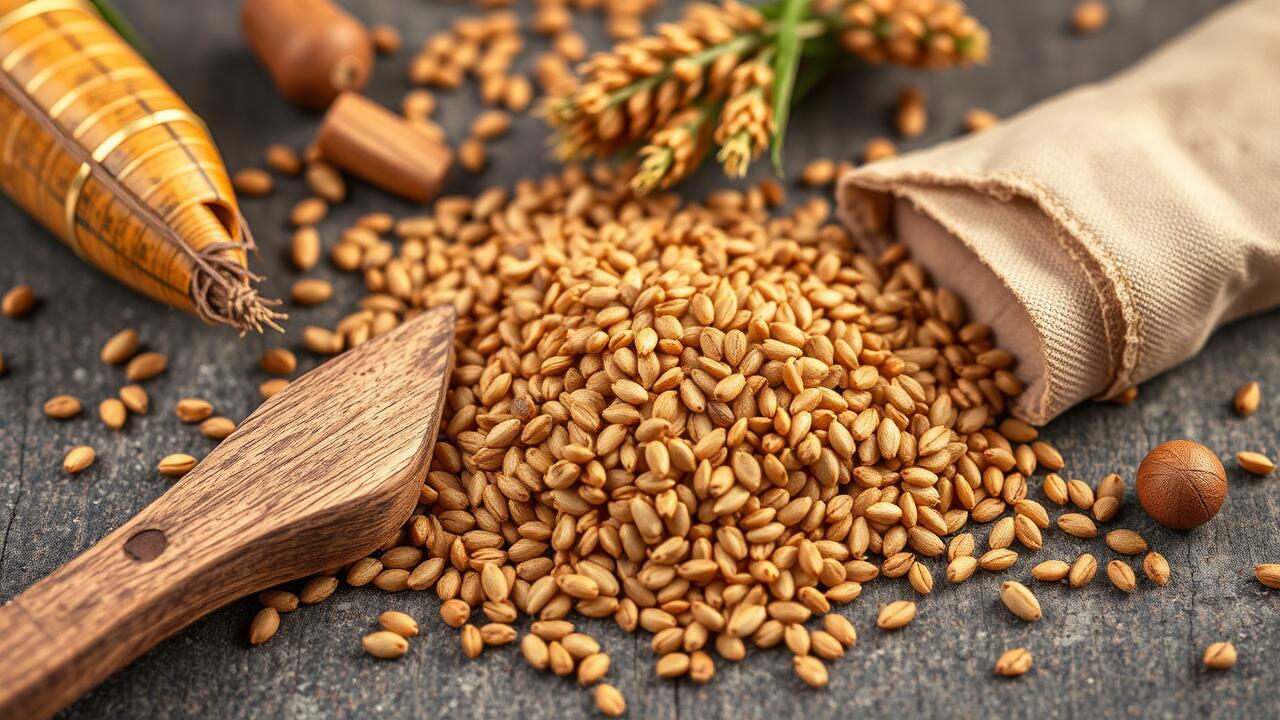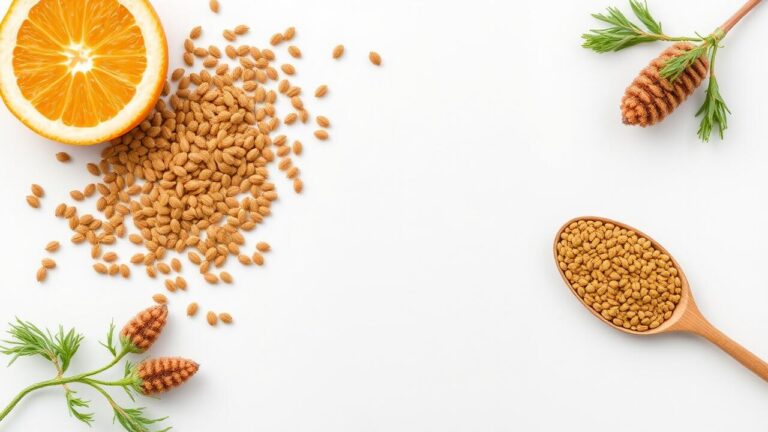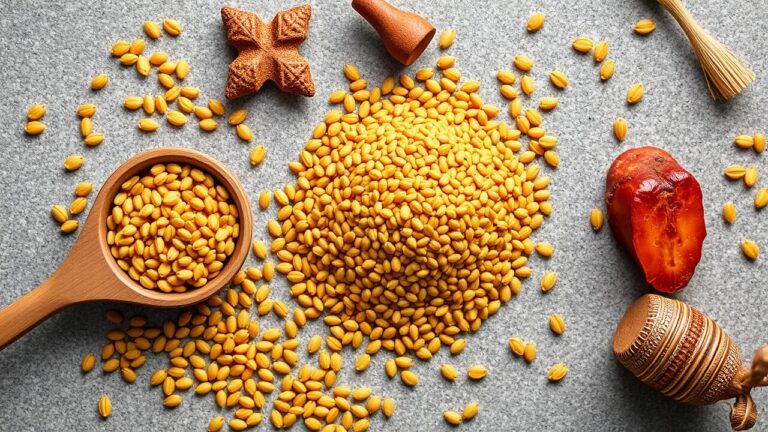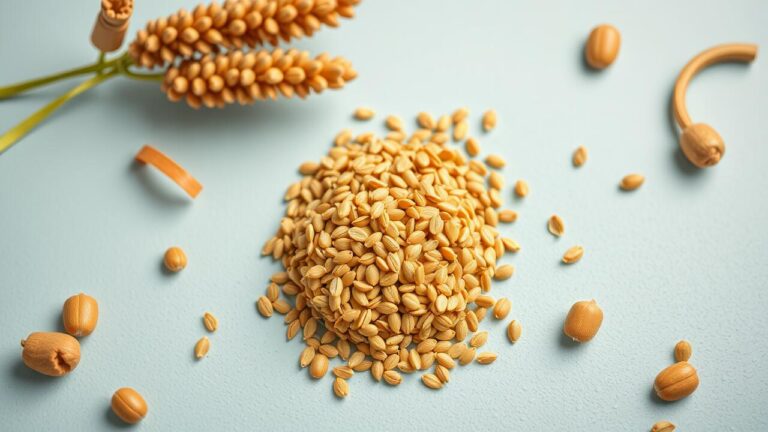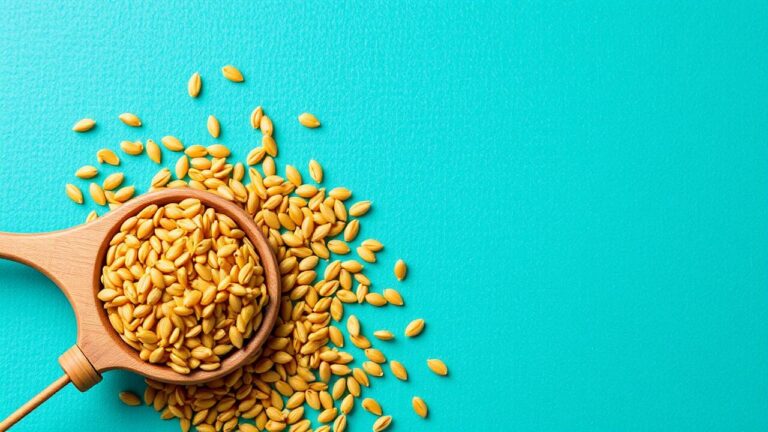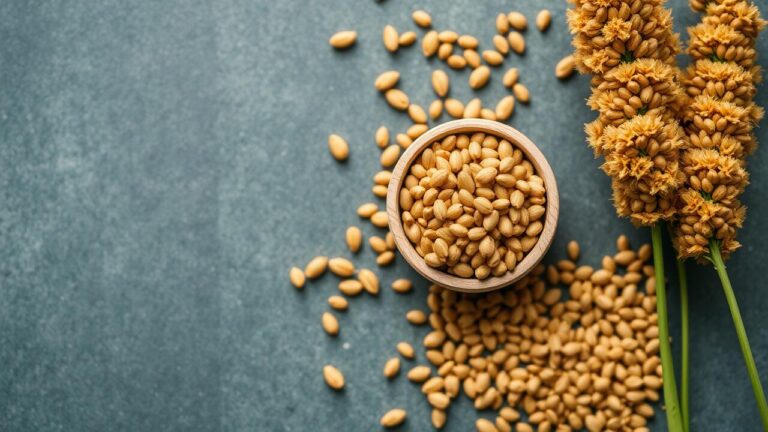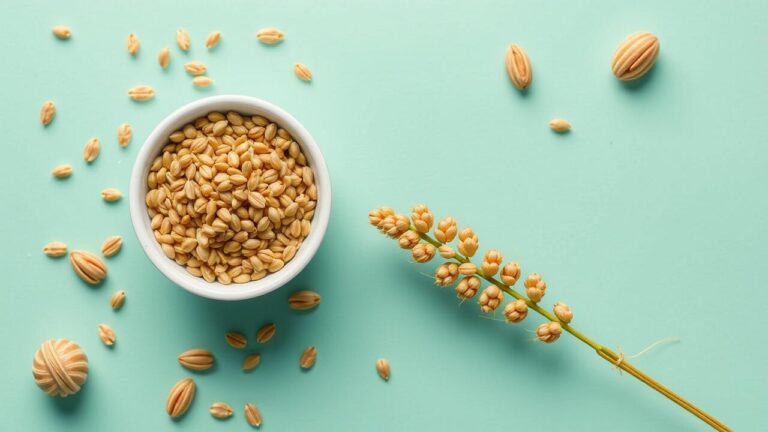Sustainable Flaxseed Production
Pest Management Strategies in Flaxseed Farming
Ah, the intricate dance of effective pest management—an essential art for not just boosting yields but safeguarding the very essence of flaxseed crops. Picture this: a tapestry woven with diverse strategies, each thread working in harmony to combat those pesky intruders that threaten our harvests. Among these threads lie biological controls, crop diversity, and resilient plant varieties—all key players in this ongoing battle.
But wait! The plot thickens with regular monitoring—a vigilant eye crucial for spotting infestations before they spiral out of control. This proactive stance opens the door to timely interventions, allowing us to dial down our dependence on chemical pesticides while gently steering clear of environmental pitfalls.
Now let’s shift gears; cultural practices emerge as pivotal allies in this saga. Engaging in crop rotation can send pests into disarray by disrupting their life cycles, whereas diligent field sanitation acts as an eraser for potential breeding hotspots. And then there are beneficial insects—nature’s own guardians—introduced into the fray to bolster natural pest control and cultivate a balanced ecosystem.
Add a sprinkle of precision agriculture technologies into the mix; they elevate monitoring and targeting efforts to new heights! All these combined tactics forge a path toward sustainable pest management practices that resonate deeply within healthier flaxseed production systems. So here we stand at the crossroads of innovation and nature—a synergy aimed squarely at flourishing crops!
Organic Pest Control Methods
Harnessing the power of biological control methods presents an intriguing solution for managing pest populations in the realm of flaxseed farming. Picture this: introducing natural predators or parasites into the fray, a strategy that delicately weaves balance back into the fabric of our ecosystems. Take, for instance, the strategic release of beneficial insects like ladybugs or lacewings—these tiny warriors zero in on aphid infestations with pinpoint accuracy. But wait! There’s more to this ecological tapestry; maintaining a rich diversity of crops creates inviting habitats for these helpful organisms, amplifying our efforts in pest management.
Now, let’s pivot to another organic approach that centers around plant-based insecticides born from nature’s bounty. Neem oil and pyrethrin emerge as champions here, proving their mettle against a spectrum of pests while sparing their benevolent counterparts from harm’s way. And don’t overlook companion planting strategies; certain plants wield the remarkable ability to repel harmful insects or draw in pollinators, enriching our flaxseed crop’s vitality and resilience. These techniques not only tread lightly upon our environment but also resonate with consumers’ growing appetite for sustainably sourced agricultural products—a harmonious blend where ecology meets economy!
Water Conservation Techniques
In the realm of flaxseed cultivation, where arid climates and scarce water resources loom ominously, the art of effective water conservation techniques emerges as a beacon of hope. Picture this: farmers ingeniously harnessing rainwater harvesting systems, transforming mere precipitation into liquid gold for irrigation. This not only curtails reliance on dwindling groundwater supplies but also acts like a guardian angel for soil moisture levels—ushering forth healthier crops that stand resilient against nature’s whims.
But wait! There’s more to this tale. Enter mulch—the unsung hero gracing flaxseed fields with its presence. By draping organic materials like straw or wood chips across the earth, evaporation is thwarted, and precious moisture clings tenaciously to the soil below. These humble barriers don’t just combat water loss; they generously offer nutrients in return as they break down over time—a true win-win!
By weaving these innovative practices into their farming tapestry, cultivators can sculpt a future defined by sustainable water management—a steadfast promise that flaxseed agriculture will thrive even amidst shifting environmental tides.
Efficient Irrigation Practices for Flaxseed
Irrigation isn’t just a cog in the wheel of flaxseed cultivation; it’s the lifeblood that can make or break success. When we talk about smart, efficient practices, we’re diving into a realm where water conservation is not merely an option but a necessity. Enter drip irrigation—a method so precise it delivers water straight to the roots with laser-like accuracy, slashing evaporation and runoff like a hot knife through butter. This meticulous strategy doesn’t just save water; it cultivates healthier plants by keeping moisture levels consistent in the soil—like giving them a refreshing drink exactly when they need it.
But wait! There’s more. Regularly monitoring soil moisture offers farmers invaluable insights, allowing them to fine-tune their irrigation schedules tailored specifically for their crop’s whims and needs—talk about optimizing every precious drop!
Now imagine this: integrating technology into these age-old practices could revolutionize flaxseed production as we know it! Think moisture sensors and automated systems that provide real-time updates on soil conditions—it’s like having your finger on nature’s pulse, ensuring water flows only when absolutely necessary. And let’s not overlook rainwater harvesting—a brilliant solution for capturing those fleeting drops from above to be stored for later use.
By weaving together these innovative techniques, farmers can dramatically cut down on their overall water consumption while still creating ideal growing conditions for flaxseed—a win-win situation if ever there was one!
Crop Rotation and Its Benefits
Implementing a crop rotation system can profoundly boost the overall health and productivity of flaxseed fields. Imagine this: alternating flax with legumes or other complementary crops, a dance of diversity that transforms soil structure and ramps up nutrient availability! This ingenious practice curtails the pesky buildup of pests and diseases that tend to flourish when a single crop is planted in the same spot year after year. And let’s not forget about those beneficial microorganisms—they thrive under these varied cropping conditions, further bolstering plant health and leading to impressive yield increases.
But wait—there’s more! The ripple effects of crop rotation stretch far beyond immediate gains in productivity. It champions long-term sustainability by enriching soil fertility while reducing reliance on chemical fertilizers. Different crops tap into distinct nutrients; strategically orchestrated, they can naturally replenish vital soil resources over time. By embracing an array of plant species, farmers don’t just shield themselves against market fluctuations—they cultivate a resilient agricultural ecosystem, ensuring a steady supply of flaxseed for years to come. What an intricate web we weave when we foster such harmonious practices!
Enhancing Soil Nutrients Through Rotation
Ah, the art of crop rotation—an ingenious dance for enriching soil nutrients in the realm of flaxseed farming! Picture this: farmers weaving through their fields, alternating the golden flaxseed with vibrant legumes or other nutrient-fixing crops. It’s not just a simple swap; it’s a masterstroke that breathes life back into the soil. Legumes, those unassuming powerhouses, work wonders by boosting nitrogen levels—a vital ingredient for robust plant growth. The result? A dramatic decrease in dependence on synthetic fertilizers while simultaneously nurturing soil structure and health.
But wait, there’s more! This rich tapestry of diverse crop rotations doesn’t merely serve to enrich; it also plays an intricate game against pests and diseases that tend to plague flaxseed crops. Such biodiversity is like setting up a harmonious ecosystem within the farm’s embrace. And let’s not overlook the remnants from previous harvests—they’re no mere leftovers but rather valuable contributors! These residues infuse organic matter into the earth, enhancing moisture retention and creating a thriving habitat for beneficial microorganisms.
In essence, these thoughtfully executed rotation practices don’t just promise fleeting benefits; they pave the way for enduring sustainability and heightened productivity in flaxseed farming—a true testament to nature’s delicate balance!
| Crop Type | Nutrient Benefits | Rotation Cycle Duration (Years) | Pest/Disease Management |
|---|---|---|---|
| Flaxseed | Requires balanced nutrients; benefits from legumes’ nitrogen fixation | 1 | Common pests: aphids, root maggot; rotation helps mitigate |
| Legumes (e.g., Peas, Lentils) | Fix nitrogen in soil, improve fertility | 1-2 | Reduces root diseases; enhances overall soil health |
| Brassicas (e.g., Cabbage, Mustard) | Enhances soil structure; adds organic matter | 2 | Deters certain soil-borne pathogens |
| Cereal Crops (e.g., Wheat, Barley) | Utilize different nutrient profiles; can reduce weed pressure | 2 | Breaking disease cycles common with flaxseed |
Certification for Sustainable Flaxseed
Securing certification—now that’s a pivotal leap for farmers eager to showcase their dedication to sustainable flaxseed cultivation! A smorgasbord of organizations dangles enticing certification programs, each laden with stringent environmental, social, and economic benchmarks. Picture this: farmers must adhere to a medley of guidelines that champion biodiversity, nurture soil vitality, and minimize chemical applications. By weaving these standards into the very fabric of their farming methods, they not only bolster the credibility of their produce but also unlock doors to lucrative markets that cherish sustainability.
Diving deep into the labyrinthine certification processes is absolutely critical for producers who want to thrive in this increasingly eco-aware landscape. Each certifying entity boasts its own unique set of criteria—sometimes wildly divergent—that can sway everything from seed choices all the way through harvesting practices. Gaining a robust understanding of these regulations? That’s non-negotiable; it’s your ticket to compliance and achieving coveted certification status! Ultimately, successful accreditation doesn’t just serve as a badge for sustainable management—it empowers producers to effectively convey their commitment to environmental stewardship right into consumers’ hands.
Understanding Certification Processes and Standards
The labyrinthine pathways of certification processes for sustainable flaxseed production are nothing short of pivotal in ensuring that farmers engage in eco-conscious practices. Picture this: a tapestry woven by various organizations, like the USDA and the Global Organic Textile Standard, each thread representing stringent criteria a farm must meet to don the coveted badge of certification. These benchmarks delve deep into realms such as pesticide application, soil vitality, and crop stewardship—each aspect critical to fostering harmony with nature.
The journey begins with an initial inspection—a sort of rite of passage—followed by a series of ongoing evaluations aimed at verifying adherence to these established guidelines. Yet, for farmers aspiring to achieve this hallmark status, the road is anything but smooth; they find themselves ensnared in a web of paperwork and documentation that demands meticulous attention and an intimate familiarity with regulatory nuances.
But here’s where it gets intriguing: while navigating this intricate maze can be daunting—an endeavor that often feels overwhelmingly complex—the rewards extend far beyond mere compliance. Certified products unlock doors to premium markets brimming with consumers who hold sustainability close to their hearts. It’s not just about ticking boxes; it’s about embracing a philosophy that resonates deeply in today’s conscientious marketplace.
- Understanding the specific requirements set by organizations like the USDA and the Global Organic Textile Standard is crucial for farmers.
- Regular training and education on sustainable practices can empower farmers throughout the certification process.
- Maintaining thorough records of farming practices and inputs is essential for successful inspections.
- Engaging with certifying bodies early in the process can help clarify expectations and reduce confusion.
- Establishing a network with other certified farmers can provide valuable insights and support.
- Awareness of market demands for certified products can motivate farmers to pursue certification.
- Embracing sustainability not only enhances marketability but also contributes to environmental protection.
Future Trends in Flaxseed Production
The future of flaxseed production is being dramatically reshaped by the whirlwind of innovations in biotechnology. Picture this: new genetic varieties are emerging—crafted with precision—to boost disease resistance and ramp up yields. These cutting-edge developments are not just clever tweaks; they’re engineered to brave the unpredictable whims of climate change, promising a steadier food supply for all. But that’s not where it ends! Research is diving deep into enhancing oil content and nutritional value, positioning flaxseed as a star player for health-savvy consumers and food manufacturers alike.
Meanwhile, sustainable farming practices are on an evolutionary path, morphing particularly in realms like resource efficiency and environmental stewardship. Enter precision agriculture—a game changer gaining momentum—empowering farmers to keep tabs on crop vitality while fine-tuning inputs with laser-sharp accuracy. Imagine drones soaring overhead and satellite imagery painting detailed pictures of fields below; these tools will supercharge decision-making processes like never before! As consumer cravings for sustainable products surge, it’s likely that farmers will pivot toward greener methods, securing flaxseed’s place as a prized crop amid the ever-changing agricultural tapestry.
Innovations in Sustainable Farming Practices
The fusion of technology with agriculture is nothing short of a seismic shift, upending age-old farming practices in ways that are both profound and multifaceted. Enter precision agriculture—a realm where data analytics dance alongside cutting-edge sensors, meticulously monitoring every nuance of crop health and resource utilization. Farmers now wield the power to fine-tune their inputs—water, fertilizers, pesticides—with dazzling accuracy based on real-time insights. This isn’t just about trimming waste; it’s about unleashing an unprecedented surge in productivity while simultaneously championing sustainability by curbing environmental footprints.
But wait! There’s more: revolutionary breeding techniques have emerged, crafting flaxseed varieties that not only sip lightly from the resources well but also stand tall against pests and diseases like seasoned warriors. Such breakthroughs pave the way for a diminished reliance on chemical treatments, nurturing ecosystems that thrive rather than merely survive. And let’s not overlook agroecological practices—they’re not just buzzwords; they’re vital strategies that bolster biodiversity and enrich soil health, weaving a safety net for flaxseed production as we look toward tomorrow.
In this whirlwind of innovation and advancement lies a treasure trove of opportunities for farmers—an invitation to reimagine their craft while staying true to the ethos of sustainability. It’s an exhilarating journey into uncharted territory where tradition meets transformation at every turn!
Conclusion
Sustainable flaxseed production marks a significant turning point in the realm of agriculture, where economic viability dances hand-in-hand with environmental stewardship. Picture this: integrated pest management swoops in like a guardian angel, while water conservation techniques embrace efficiency and crop rotation spins a tale of diversity. Together, these strategies don’t just promise healthier yields; they breathe life into biodiversity itself! They fortify the resilience of flaxseed farming, equipping farmers to navigate the whims of changing ecological landscapes without sacrificing productivity.
Now let’s talk certification—those intricate processes that serve as a guiding star for farmers eager to showcase their eco-friendly commitments. As innovative farming techniques burst onto the scene like fireworks on the Fourth of July, the flaxseed industry is ready to leap forward, solidifying its place in an ever-sustainable future. This relentless pursuit of sustainable practices isn’t merely beneficial; it weaves together advantages for farmers, consumers, and our fragile environment alike—an interconnected tapestry thriving on shared dedication!
